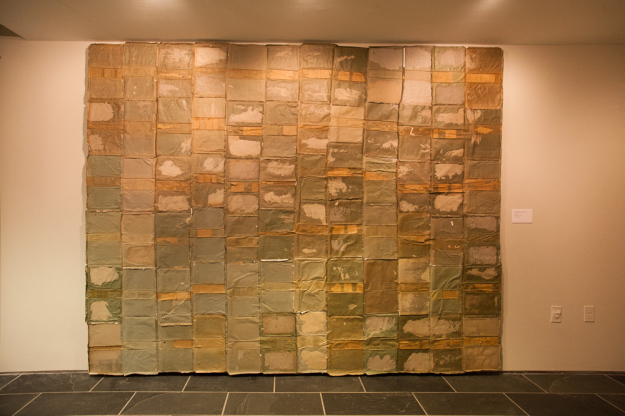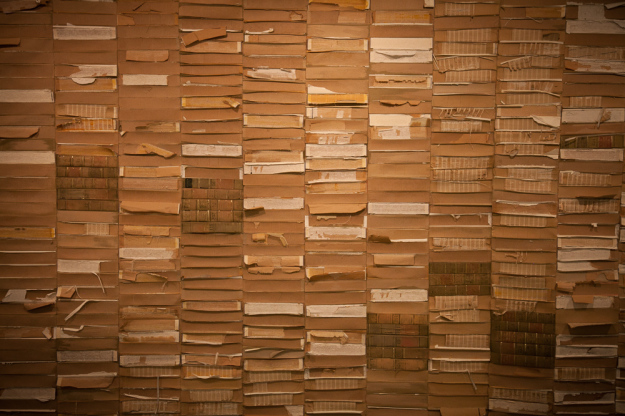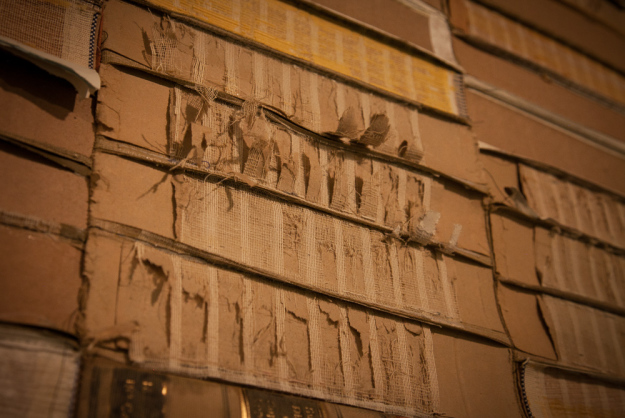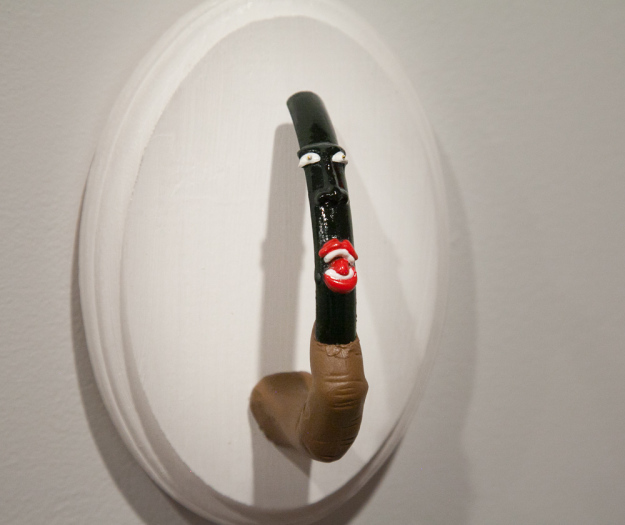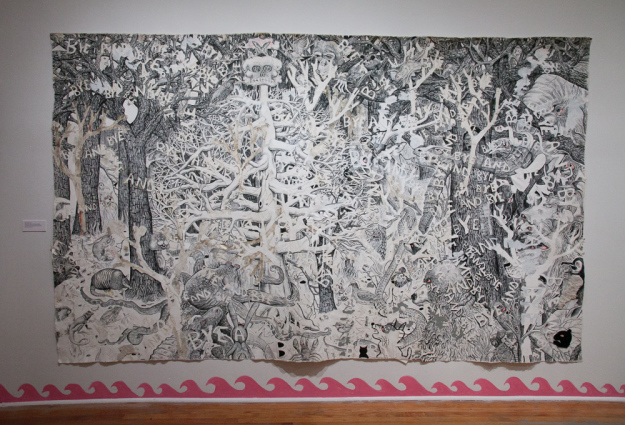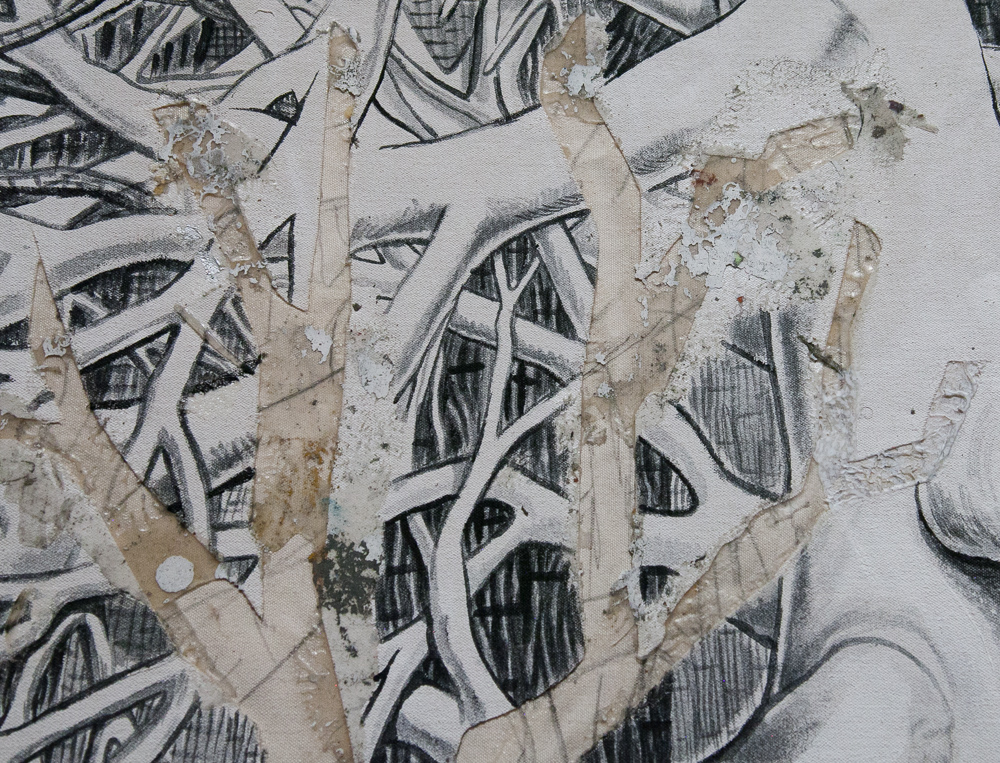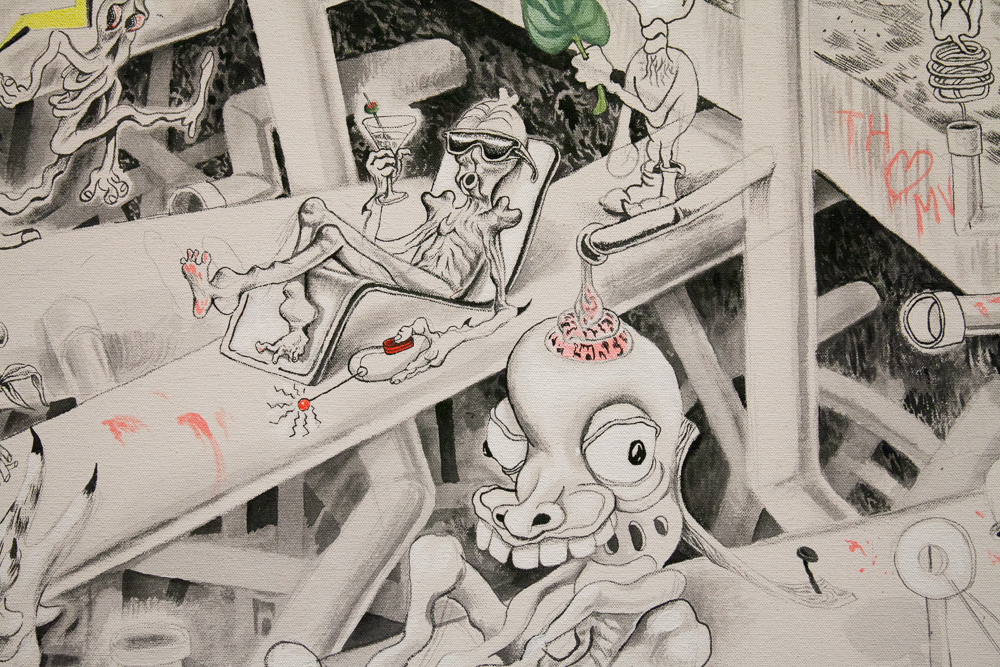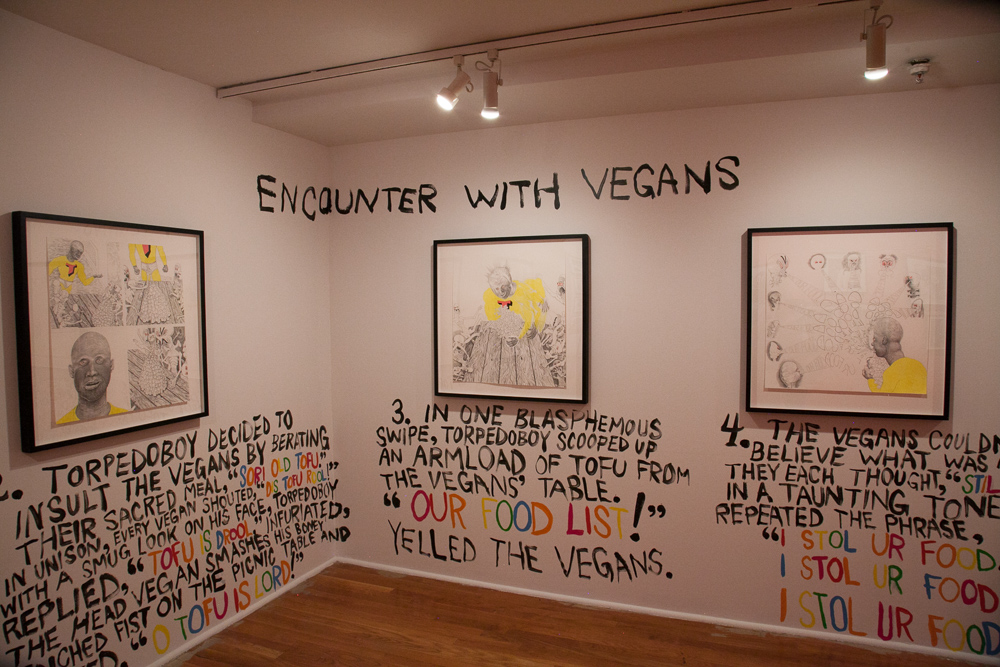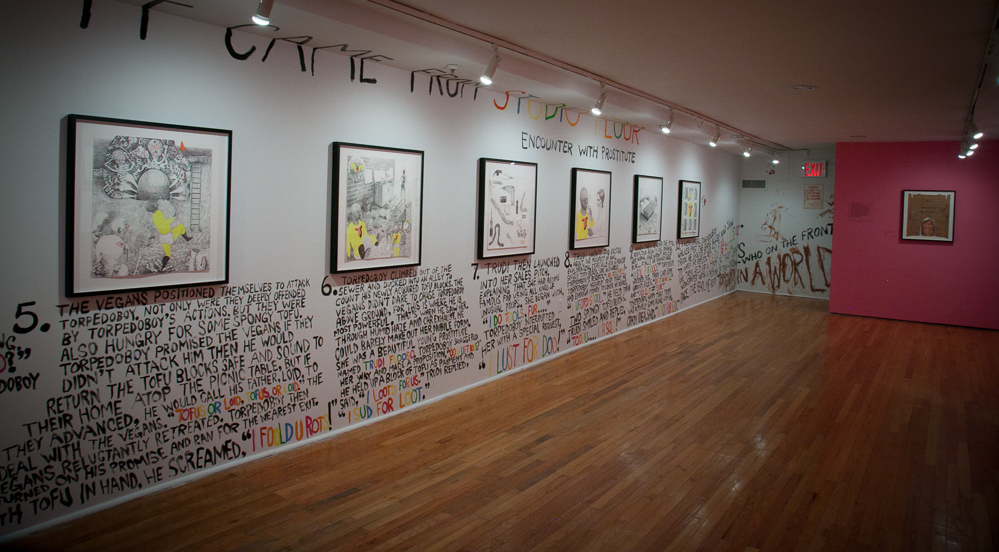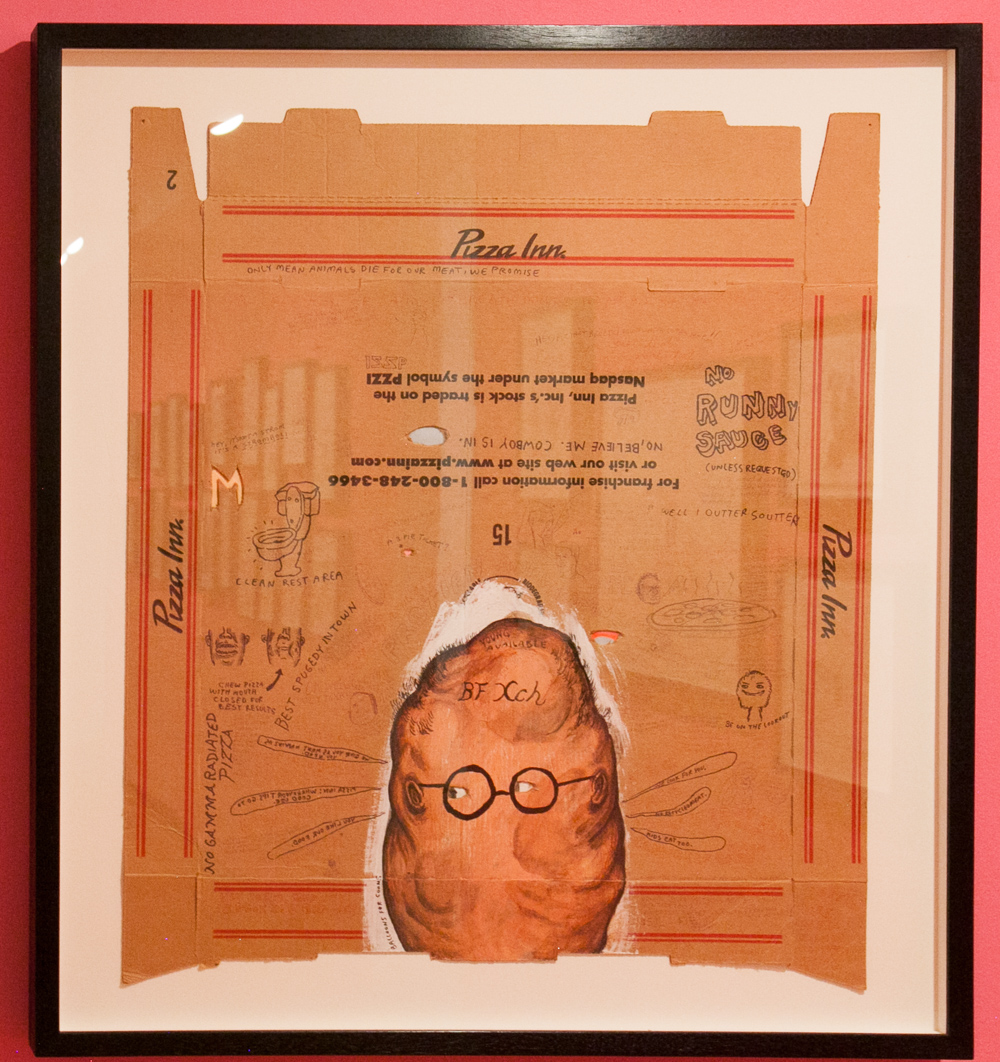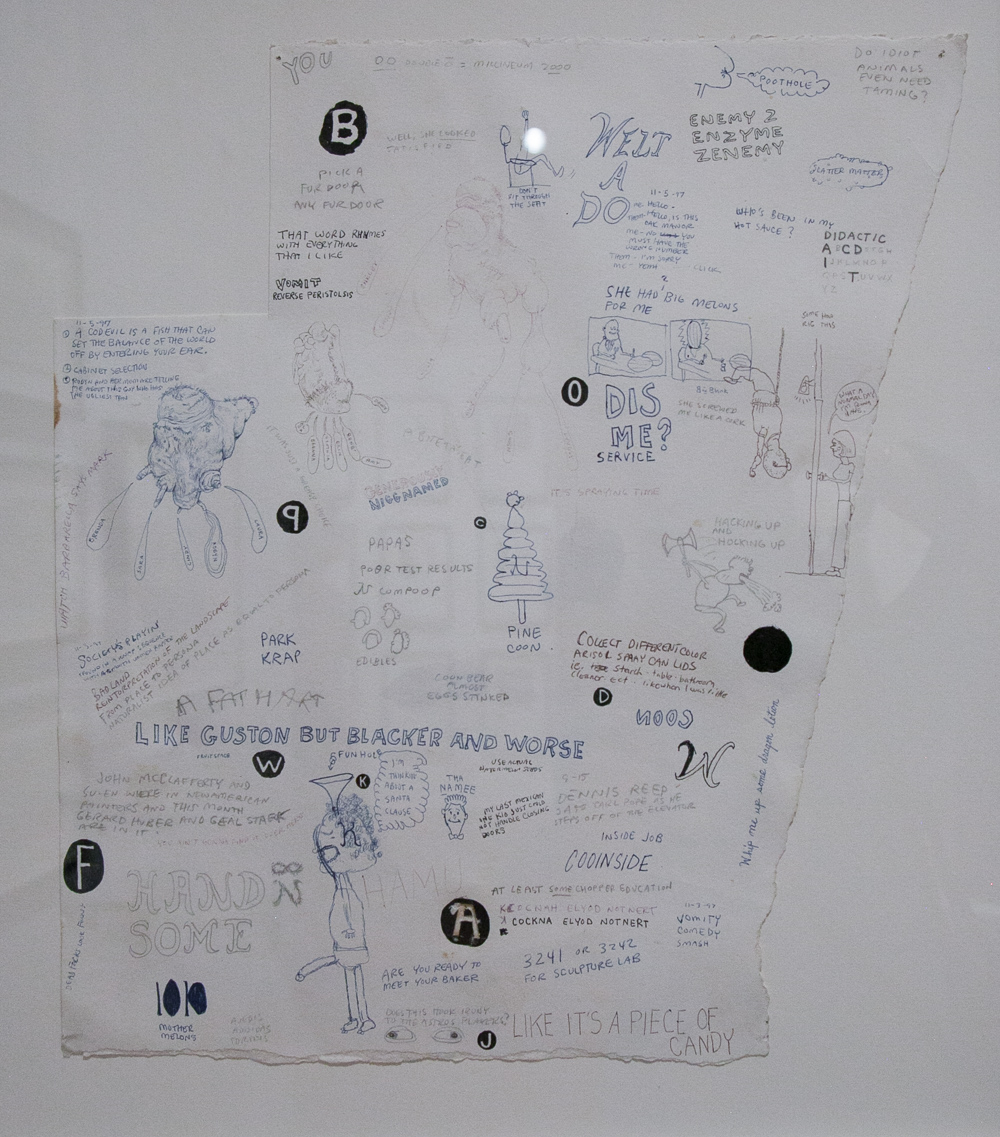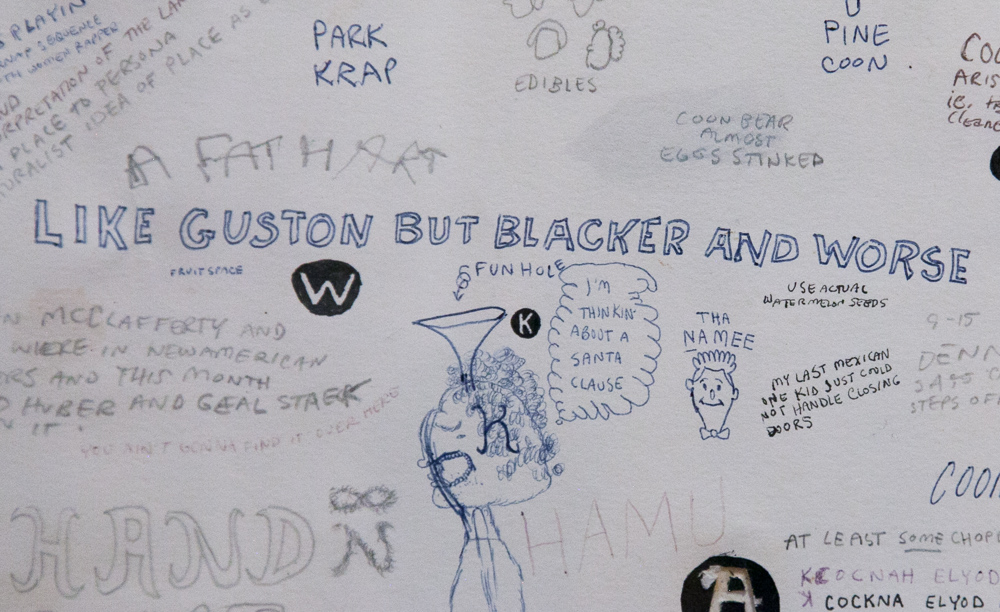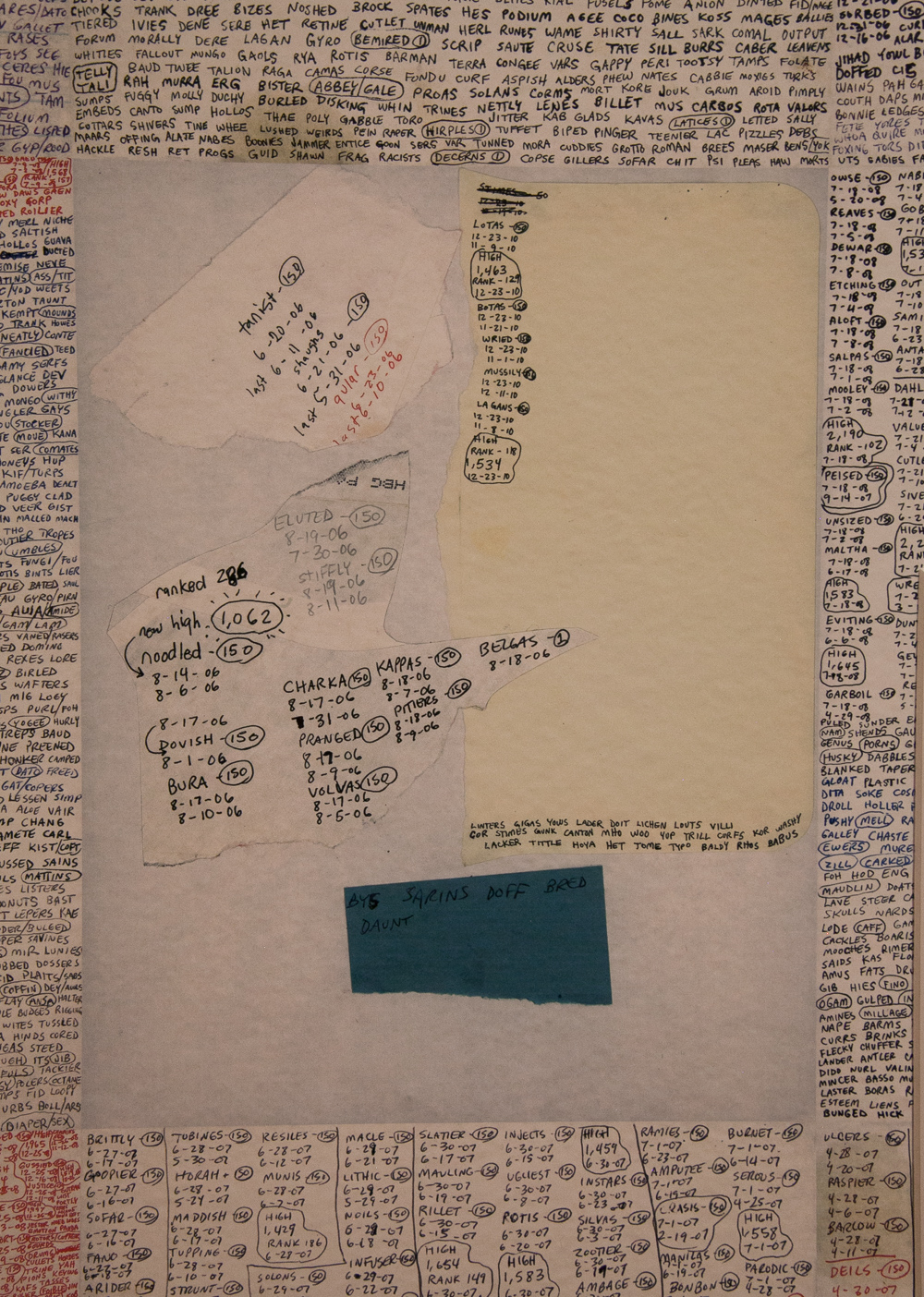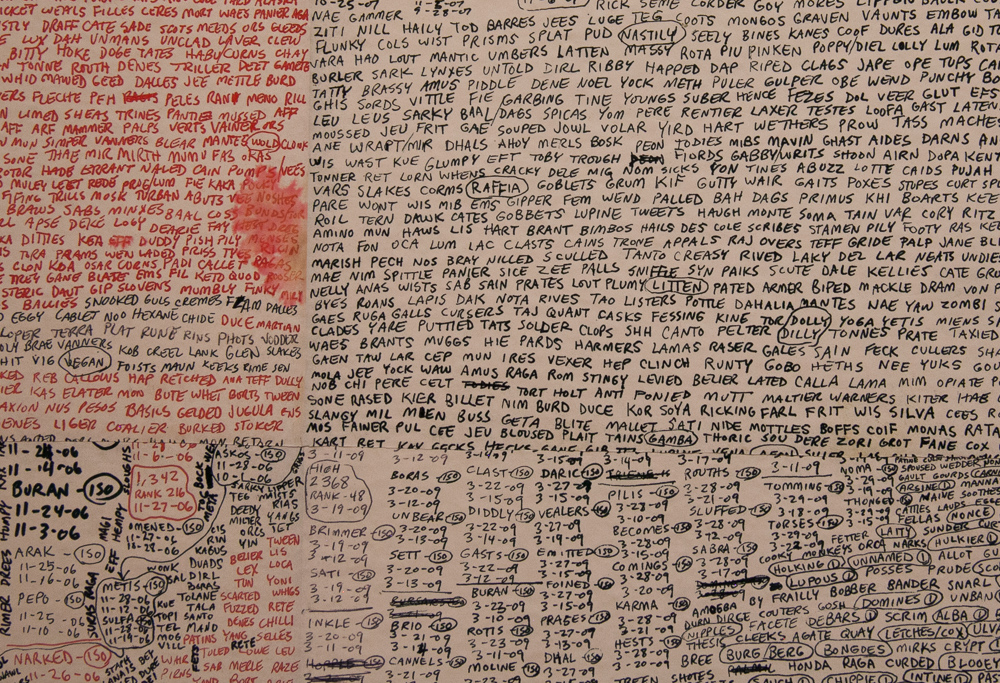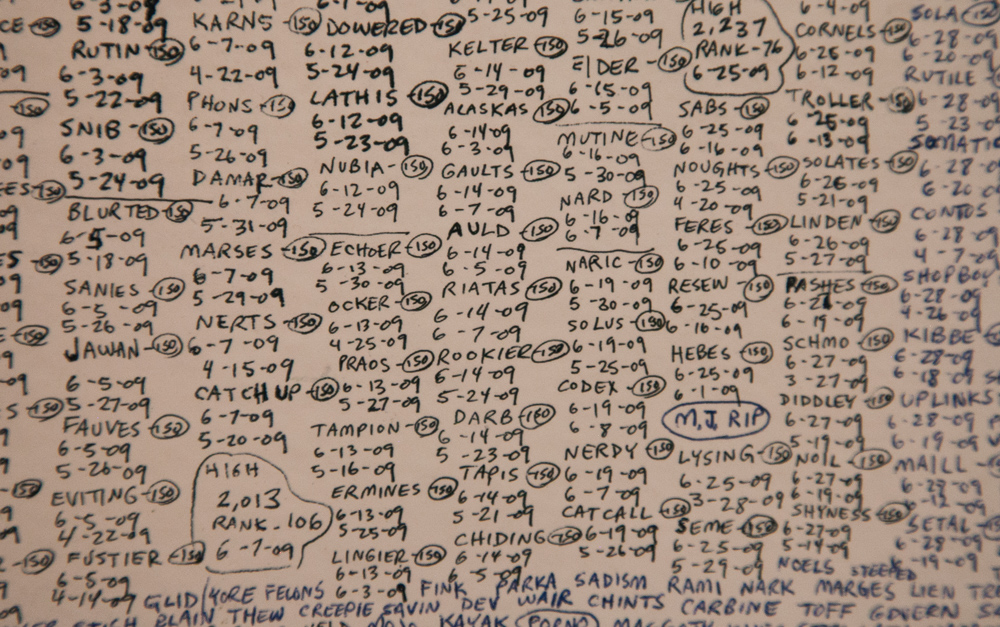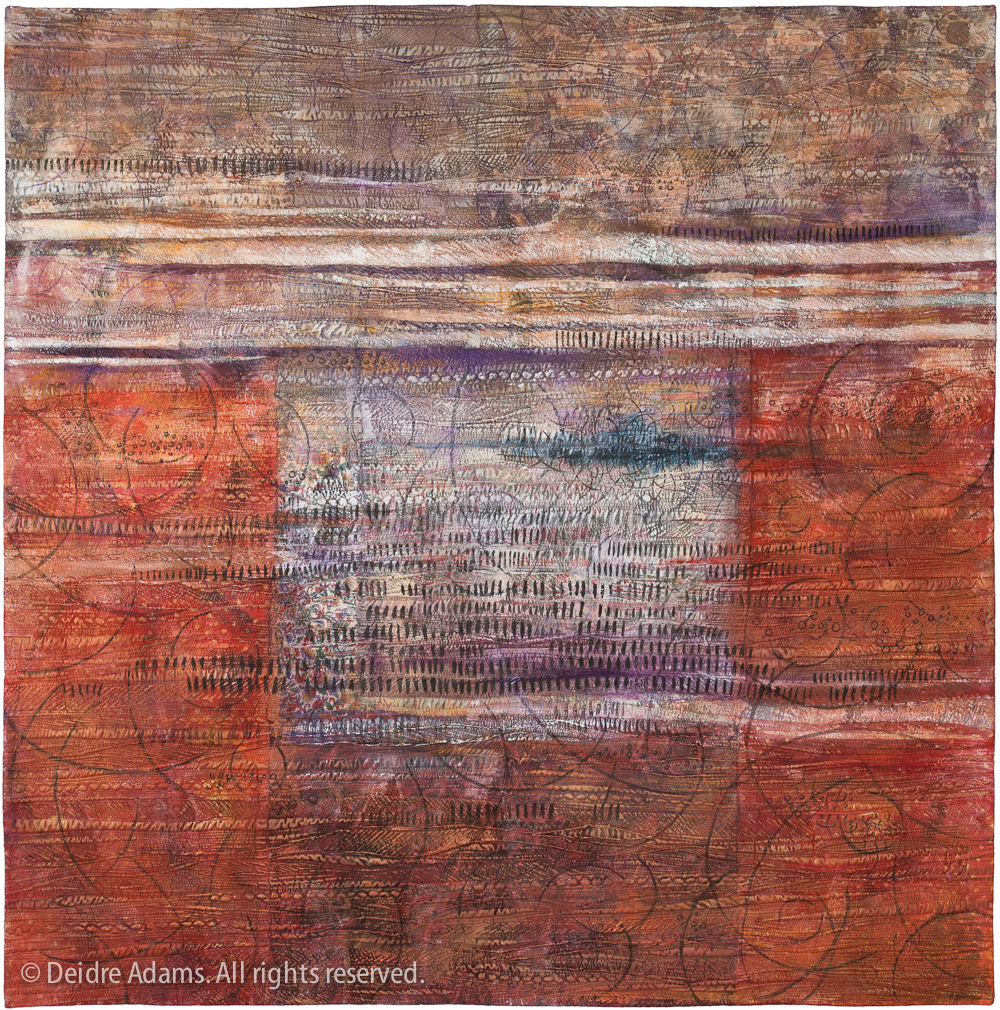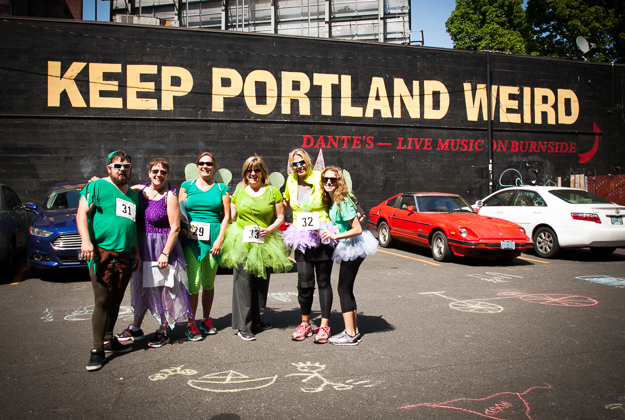More selections from the Studio Museum
The Studio Museum in Harlem – 144 West 125th Street, New York
Samuel Levi Jones – Unbound
 Installation view of Unbound, work by Samuel Levi Jones
Installation view of Unbound, work by Samuel Levi Jones
Samuel Levi Jones (b. 1978) deconstructs and manipulates books such as encyclopedias and textbooks, to critically explore systems of knowledge and power.
In 2013, Jones began collecting the encyclopedias and reference books—often understood as authoritative sources of information, even though they are sometimes biased and inaccurate—that form the foundation of his current project. He tears the covers off these books and stitches the exposed binding surfaces together in grids, which he then mounts on canvas.
In the three wall works, form and materiality are emphasized, while function and value are called into question—the books have been stripped of authoritative identity. These works engage recent criticism of the law and the justice system with respect to human rights and social welfare. (The Studio Museum)
This work inspires feelings of what I admiringly call “jealous rage” – meaning that it is wonderful and complete and just so right. I wish I’d been the one to think of it and do it, but instead I can only gaze upon it in reverence. It carries the evidence of intense and thoughtful process, with a fine balance between utility and delicacy, and the visual effect is stunning. Its meaning is subtle and cannot be understood through a casual glance. And the fact that it’s made from repurposed books is the kicker.
Salon Style
Through an interdisciplinary examination, Salon Style looks at artists that use hair and fingernails as subjects or media in order to explore the complexities of identity and issues such as gender, politics and consumerism.
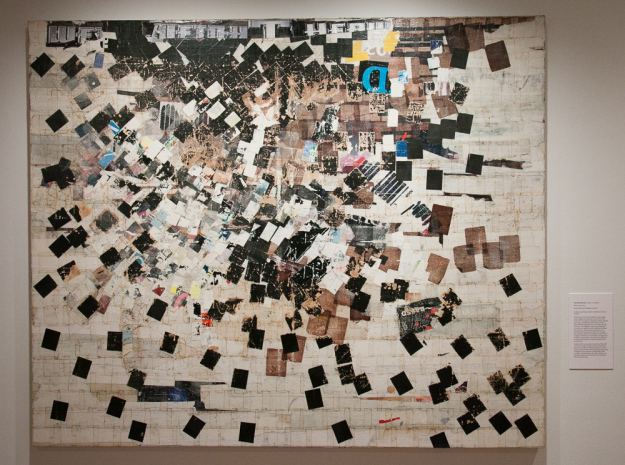 White Noise, 2014, by Mark Bradford
White Noise, 2014, by Mark Bradford
In White Noise, Bradford appropriates a culturally specific material—the endpapers used in perming hair—to construct a highly evocative, pixelated collage that unites art and the beauty industry. … The dynamic arrangement evokes the spontaneous fluctuations and growth of urban communities, a theme common to the artist’s work.
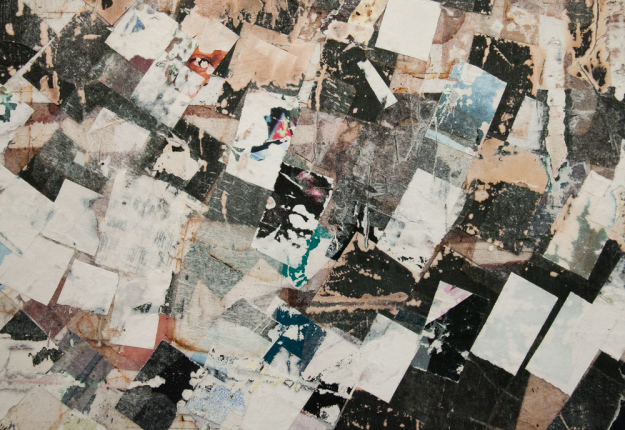 White Noise, detail
White Noise, detail
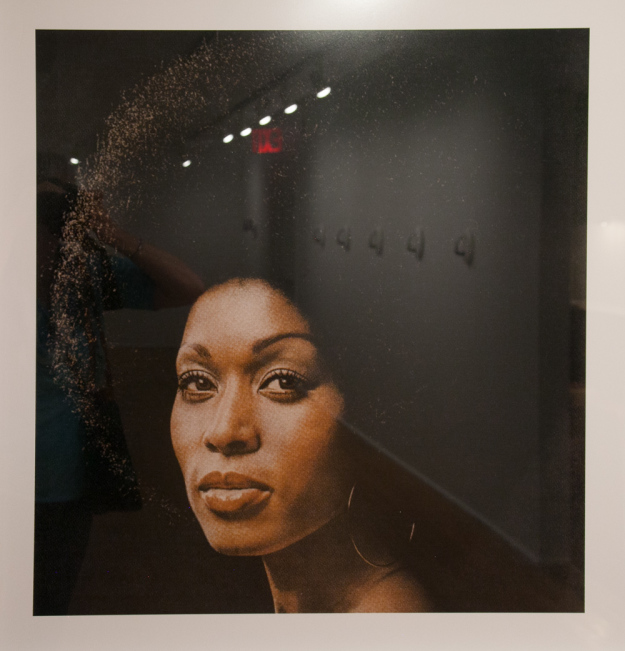 Who Can Say No to a Gorgeous Brunette? 2007, by Hank Willis Thomas
Who Can Say No to a Gorgeous Brunette? 2007, by Hank Willis Thomas
Black pride came with accessories: the Afros, dashikis, bubba, gels, Afro picks and other signifiers of a truly enlightened and politicized black person. The commercial arena was quick to appropriate these objects, of course, and soon major department stores were selling all of these items to eager black consumers anxious to remake themselves in a more enlightened fashion. This made the question of black pride difficult to locate with any kind of visual authenticity. How could that pride be after all if one of its signifiers—in the form of an Afro wig, for example—could be purchased at a mainstream white department store?
…
[T]his ambiguity is only heightened by the passage of time. If there was once any deep meaning to an image of a black woman looking into the camera with a head full of “natural” hair, that meaning is now diffused, haunted by a nostalgia of sorts. That black women with big Afros are not traditionally referred to as “gorgeous brunettes” only makes a reading of this picture even more problematic. By removing this seemingly iconic image from its original context, and re-presenting it in the contemporary moment, Thomas points to both the enduring challenge of fixing photographic meaning and the loaded social and cultural baggage, as well as presumptions, that still cling to the black subject.—Dawoud Bey, excerpted from Re:Collection: Selected works from the Studio Museum in Harlem
Selections from “BLAXIDERMY Beauty Supply Nail Sconces,” 2010, by Pamela Council
There were was quite a lot more on display; too numerous to show. Here are just a couple more:
The Picnic, 1940, by Beaufort Delaney
Beauford Delaney’s The Picnic deftly recalls Édouard Manet’s Le déjeuner dur l’herbe (1862). … Delaney consciously inserts black bodies into this leisurely scene, echoing an image well recognized in international art history. For its time, it must have been an unusual image. In our time, it remains a beautifully insistent and powerful one.
Rat (from the “C-Stunner” series), 2010, by Cyrus Kabiru.
Rat is part of the exhibition Concealed: Selections from the Permanent Collection which includes works by modern and contemporary artists that address masking as art and performance.

